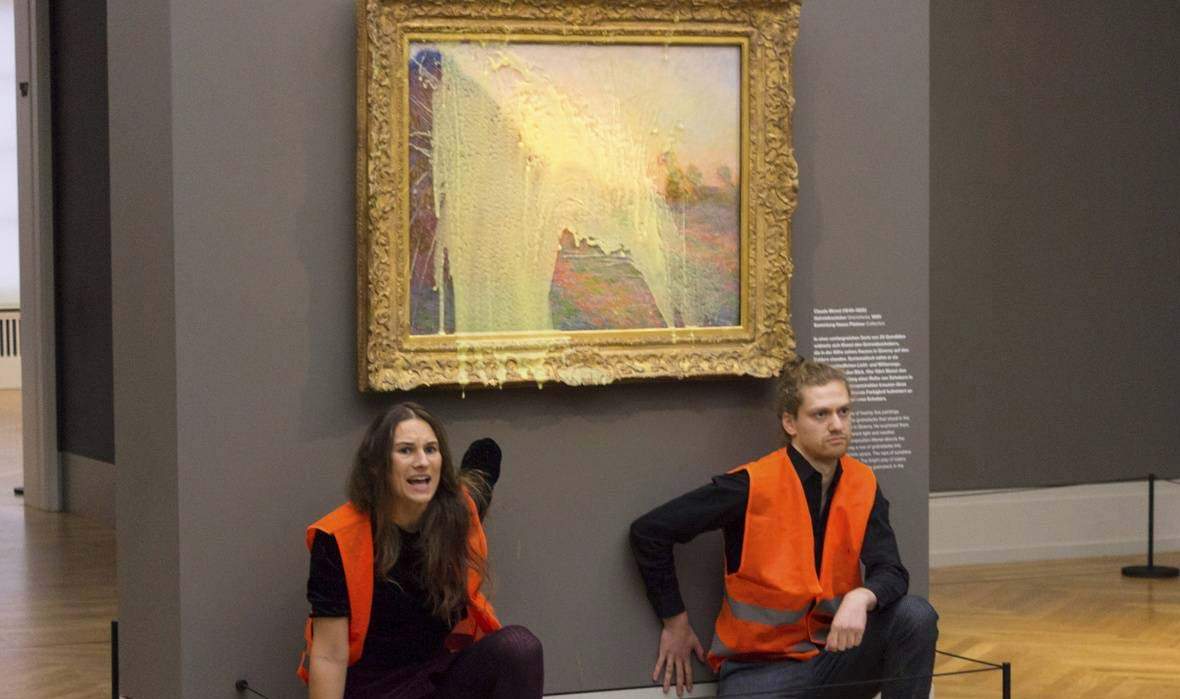After recent attacks on works of art by elements of some environmental groups, it seems to be time for museums to decide what to do. This is the issue raised by the Barberini Museum in Potsdam, Germany, where the latest incident occurred early Sunday afternoon, October 23: a couple of activists threw mashed potatoes at Claude Monet’s Haystacks. The work was protected by glass, and was not damaged. However, the frame, from the 19th century, was damaged. The perpetrators were instead taken into custody by authorities.
Following the Oct. 23 incident, however, the museum’s management decided to close the museum until Oct. 30. The closure was prompted by the desire of the museum’s founder, collector Hasso Plattner, to analyze the situation with national and international museum partners and with museums that have loaned works for current exhibitions, in order to open a discussion on the risks that have been detected as a result of the recent attacks. In view of the repeated attacks (the one that occurred at the German museum is only the most recent in a series that is stretching alarmingly long), according to the Potsdam museum, “the requirements for long-term and sustainable preservation of art in international museum operations need to be reevaluated and adapted locally.” What may happen in museums is not yet known, but it is not hard to imagine: if the attacks continue at this rate it will be plausible to expect more works protected by glass and especially more works protected by glass, because while it is true that so far hardly any damage has been reported to paintings (the case for frames is different), these acts still result in the closure of rooms, sometimes for days, major inconveniences for museums and inconvenience for visitors.
“The attack on a work from the Hasso Plattner Collection as well as previous attacks on artworks,” said Ortrud Westheider, director of the Barberini Museum, “have shown that the high international security standards for the protection of artworks in case of activist attacks are not sufficient and need to be adapted. We want to use the incident at our institution as an opportunity to establish a productive dialogue with international museum partners and set the course together to preserve art and cultural heritage for future generations.”
 |
| After numerous attacks by environmentalists, now museums ponder how to protect themselves |
Warning: the translation into English of the original Italian article was created using automatic tools. We undertake to review all articles, but we do not guarantee the total absence of inaccuracies in the translation due to the program. You can find the original by clicking on the ITA button. If you find any mistake,please contact us.